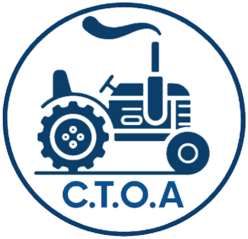Forum › Forums › Tractor Troubleshooting › Jinma 254 not charging
- This topic has 4 replies, 4 voices, and was last updated 8 years, 7 months ago by
Halifax.
-
AuthorPosts
-
-
August 29, 2016 at 6:03 pm #46331
Hello everyone, been a while since posting but I keep up with everything.
Issue being the Jinma 254 not charging. I have 12.54 at the battery. I pulled the battery cables and cleaned them up, cleaned up the ground, and cleaned up the starter wires. Same results, roughly 12.5 at the battery.
At the terminals on the Alternator, with key off I have:
(+) that is battery voltage, 12.5V
(I) Ignition 0V
(F) Field 0V
(N) Sense?? 4.7V
Key on not started:
(+) battery voltage, 12.5V
(I) Ignition 12.4V
(F) Field 12.4V
(N) Sense?? 12.4V
Key on and started:
(+) battery voltage, 12.5V
(I) Ignition 12.4V
(F) Field 12.4V
(N) Sense?? 12.4V
Now for the assumptions and questions, the Terminals have voltage so the wiring, keyswitch should be ok.
The (N) terminal I think is the sense which should be less than battery voltage unless the battery is charged, ie stop the alternator from charging then I would expect 12+ volts.
I pulled each wire and cleaned them on the alternator, and pulled the voltage regulator and cleaned the terminals. (plug in type at the fuse box) same results.
I’m leaning to the voltage regulator as the problem, but it wouldn’t be the first time I’ve been wrong.. any ideas.
Aubrey
God is Great, Beer is Good, and People are Crazy! '07 Jinma 254LE
-
August 29, 2016 at 8:33 pm #46332
well the voltage reg. would be the easiest to replace and the cheapest place to start, I can not remember what lead to short to ground to bypass the reg. and make the alt. charge , hopefully someone will know and chime in or do a goggle search to find out, I assume your reg. in mounted on the fuse panel?
-
August 29, 2016 at 10:34 pm #46333
You have done a very good job investigating and troubleshooting so far. The details of the voltages is the key.
In normal operation the voltage regulator controls the voltage going to the field connection at the alternator. If battery voltage is low (usually less than about 14.5v), the regulator sends battery voltage to the field winding of the alternator (rotor), which causes a voltage output in the stator coil. This is tapped at various locations and rectified through the diodes to put a steady DC voltage out on the Battery connection at the alternator. If this voltage is greater than the battery voltage, it will charge the battery.
One way to test an alternator is to “full field” it by temporarily applying battery voltage to the field terminal. This will cause the alternator to go to maximum output (if it is working properly).
Since your alternator is getting battery voltage from the regulator, that indicates the regulator is doing its job and that the wiring is sound.
Conclusion is that your alternator has failed.
I would remove it and take it to an automotive parts store (NAPA, Pep Boys, etc.) and see if they can bench test if for you.
If your alternator is bad, you will have a decision or two to make. I am not sure if internal parts are available or not. If not, you will be looking at a replacement of some kind.
For me personally when my regulator failed, I replaced the alternator with a re-manufactured Delco 10si model for about $65. I had to do a little re-wiring and make an extension for the adjuster bracket. The Jinma regulator was $30 and some of the wiring was bad anyway.
There are pros and cons of doing so, but the results are a better charging system than came from the factory.
The Sense wire on my alternator was labeled “I”. It was used to activate the light on the dash which was redundant because my 284 had an ammeter too. The 10si I bought did not have the sense wire output so the light on the dash is non-functioning. If I felt the need a voltmeter could be added easily enough.
Let us know if you have any more questions.
Stuart
-
August 29, 2016 at 11:03 pm #46334
As an addendum to Piper, your OEM alternator only has a nominal 14 amp output. Barely enough to keep up with the lights. BUT it is a TEFC alternator, which is a very good thing on a tractor. The Delco’s are not TEFC so consequently all the dust and chaff that goes through your radiator also goes into the alternator. The Delco’s have a 35+ amp output (depending on the model) so you will have to upgrade your output wiring. In my case the Delco 12sI was a direct fit, no modification of any sort was needed, but I did install a smaller pulley in order to get the alternator revs up to be somewhat comparable to a high speed automotive engine. It’s also my understanding that Tommy now has a higher output OEM alternator available. Check with him for pricing.
Account deleted.
-
August 30, 2016 at 5:54 am #46337
Well now, I guess I’ll take the alternator to the parts place, not sure if they can test it. They only know what the computer tells them, and not hopefully they will find a pigtail to test it… Thanks for all the responses.. Aubrey
God is Great, Beer is Good, and People are Crazy! '07 Jinma 254LE
-
-
AuthorPosts
- You must be logged in to reply to this topic.
